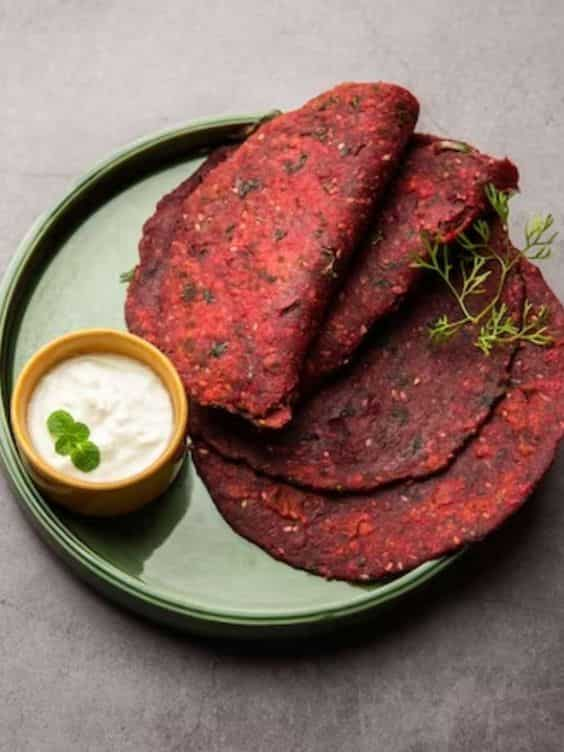Creative Substitutes for Fresh Coriander You’ll Love in Cooking
Flavorful Alternatives to Fresh Coriander You’ll Love
If you’ve ever found yourself in the kitchen, ready to whip up a delicious dish that calls for fresh coriander, only to realize you’re out of it or just really not a fan, you’re not alone! Coriander, also known as cilantro, has a distinct taste that’s often love-it-or-hate-it. But fret not, my friend! There are plenty of creative substitutes you can turn to that can add a delightful twist to your cooking. Let’s dive into some yummy alternatives that’ll tickle your taste buds!
What Makes Coriander So Special?
Before we delve into substitutes, let’s take a moment to appreciate why coriander is such a popular herb. It’s fragrant, with a fresh and citrusy flavor that can brighten up a dish. It’s often used in:
- Salsas: Provides that fresh zing in Mexican cuisine.
- Curries: Adds depth to Indian dishes.
- Salads: Lifts the flavor profile with its refreshing taste.
But for some, like an unwelcome surprise at a family reunion, its flavor can be off-putting. So, let’s explore some alternatives that can jazz up your meals just as effectively!
Top Substitutes for Fresh Coriander
1. Parsley: The Heartfelt Companion
When you think of coriander substitutes, the first stop is often parsley. This herb is as versatile as your favorite pair of jeans—goes with everything, right?
- Why it Works: Like coriander, parsley has a bright, fresh taste but is milder, making it a great alternative if you’re looking for something to maintain freshness without the overwhelming flavor.
- How to Use: Use parsley in equal amounts to coriander in recipes—sprinkle it over your dish or toss it in salads for a fresh kick.
2. Basil: The Sweet and Savory Sensation
Next up is basil. This herb has a sweet, fragrant aroma that makes it perfect for Mediterranean and Asian dishes.
- Why it Works: Basil has a completely different profile than coriander, but its aromatic quality can add a depth of flavor to your cooking.
- How to Use: Use it sparingly as its flavor can dominate. Start with half the amount you’d use for coriander, then adjust to taste.
3. Dill: A Taste of the Sea
You might be surprised to see dill on this list, but this herb can bring a unique twist to your dishes!
- Why it Works: Dill’s feathery fronds and subtle anise notes provide a completely different flavor experience, yet it can be refreshing.
- How to Use: It’s perfect in fish dishes, salads, and creamy dips. A little goes a long way; again, start with half the quantity.
4. Mint: A Refreshing Surprise
Let’s change things up with mint! Known for its bright flavor, mint can add a refreshing layer to your dishes.
- Why it Works: Mint provides a refreshing and slightly sweet flavor that can elevate salads, salsas, and even desserts.
- How to Use: Use finely chopped mint in place of coriander, but remember to use it in moderation—its flavor can be quite strong!
5. Tarragon: The Fancy Herb
If you want to get a bit gourmet, try tarragon. This herb is commonly used in French cuisine and has a unique flavor reminiscent of anise.
- Why it Works: Although it’s different from coriander, its aromatic profile can add sophistication and zest to your cooking.
- How to Use: Use fresh tarragon sparingly, as its flavor can become overpowering. A teaspoon of fresh tarragon can often replace a tablespoon of fresh coriander.
6. Chives: The Oniony Delight
Do you love a subtle onion flavor? Chives may just be the perfect substitute!
- Why it Works: Chives have a light, oniony taste that can add a kick to your dish without the pungency of actual onions.
- How to Use: Snip chives into salads, creams, or even on top of baked dishes. You can use them in a 1:1 ratio in place of coriander.
7. Culantro: The Tropical Cousin
Don’t confuse culantro with coriander! This herb has a stronger, more concentrated flavor that many enthusiastic cooks rave about.
- Why it Works: If you’re seeking that bright coriander flavor but want something a little different, culantro can be your go-to.
- How to Use: Because it’s powerful, use about half the amount you would with coriander. Perfect in sauces, soups, and marinades!
8. Green Onions: The Versatile Staple
Lastly, let’s not forget about green onions (scallions). They’re a pantry must-have and can easily take the place of fresh herbs.
- Why it Works: Like chives, green onions provide a mild onion flavor that can brighten up dishes without overshadowing them.
- How to Use: Snip the greens finely and sprinkle on top of dishes as a garnish. Use a similar amount to replace coriander.
Creative Ways to Use These Substitutes
Now that you have a bunch of options, how do you use them creatively? Here are a few tips:
- Mix and Match: You don’t have to pick just one substitute! Combining herbs like parsley and mint can create a fresh flavor profile similar to that of coriander.
- Pesto Perfection: Swap out coriander in a pesto recipe with basil or mint for a unique twist.
- Dipping Sauces: Create dipping sauces with any of the herbs above to pair with fresh veggies or grilled meats.
- Garnish Galore: Use these herbs as garnishes on plates for that restaurant-style finish to your dishes.
Conclusion
Cooking should be all about exploration and creativity. Whether you’re dodging cilantro or just looking to change things up, these substitutes for fresh coriander provide delightful new flavors to play with in your kitchen. Don’t shy away from experimenting—culinary creativity is what makes cooking fun!
Next time you find yourself missing coriander, remember these alternatives and let your taste buds take a journey. Happy cooking!
FAQs
Q1: Can I use dried herbs instead of fresh ones?
A1: Yes! Dried herbs can often work in place of fresh ones, but remember that dried herbs are more concentrated, so use about a third of the amount.
Q2: What can I use if I don’t have any herbs at all?
A2: Try adding lemon zest or a splash of lemon juice for brightness. Other spices like cumin or paprika can also add depth.
Q3: Is there a way to grow my own coriander?
A3: Absolutely! Coriander is easy to grow indoors or outdoors. Just ensure it gets plenty of sunlight and regular watering!
Q4: Are there substitutes with a similar flavor profile?
A4: Culantro is closely related to coriander and offers a similar flavor, though it’s more potent.
Q5: How do I store leftover herbs?
A5: Wrap fresh herbs in a damp paper towel and place them in a sealed bag in the fridge. This will help them stay fresh longer!







